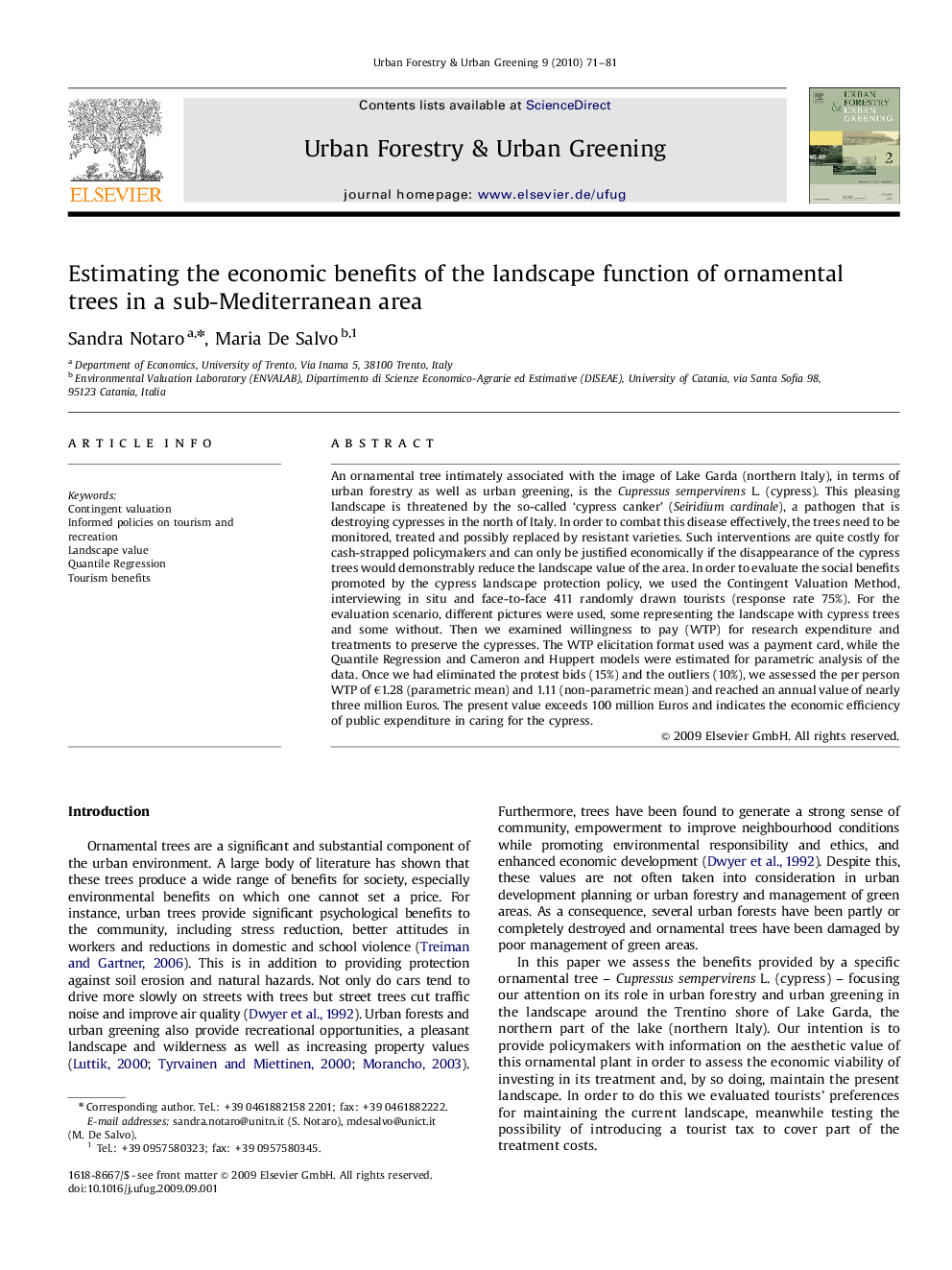| Article ID | Journal | Published Year | Pages | File Type |
|---|---|---|---|---|
| 94151 | Urban Forestry & Urban Greening | 2010 | 11 Pages |
An ornamental tree intimately associated with the image of Lake Garda (northern Italy), in terms of urban forestry as well as urban greening, is the Cupressus sempervirens L. (cypress). This pleasing landscape is threatened by the so-called ‘cypress canker’ (Seiridium cardinale), a pathogen that is destroying cypresses in the north of Italy. In order to combat this disease effectively, the trees need to be monitored, treated and possibly replaced by resistant varieties. Such interventions are quite costly for cash-strapped policymakers and can only be justified economically if the disappearance of the cypress trees would demonstrably reduce the landscape value of the area. In order to evaluate the social benefits promoted by the cypress landscape protection policy, we used the Contingent Valuation Method, interviewing in situ and face-to-face 411 randomly drawn tourists (response rate 75%). For the evaluation scenario, different pictures were used, some representing the landscape with cypress trees and some without. Then we examined willingness to pay (WTP) for research expenditure and treatments to preserve the cypresses. The WTP elicitation format used was a payment card, while the Quantile Regression and Cameron and Huppert models were estimated for parametric analysis of the data. Once we had eliminated the protest bids (15%) and the outliers (10%), we assessed the per person WTP of €1.28 (parametric mean) and 1.11 (non-parametric mean) and reached an annual value of nearly three million Euros. The present value exceeds 100 million Euros and indicates the economic efficiency of public expenditure in caring for the cypress.
